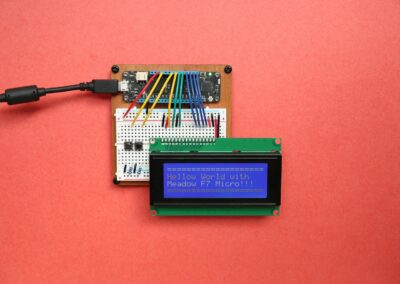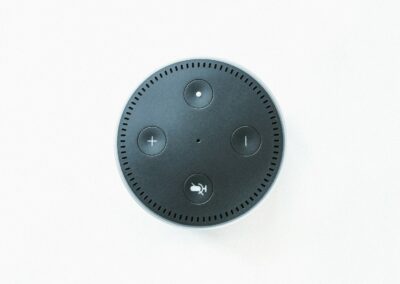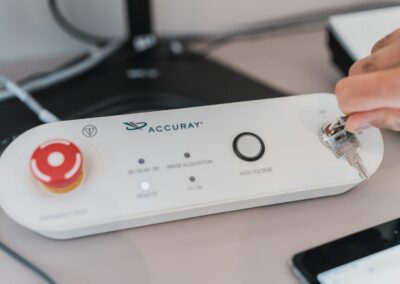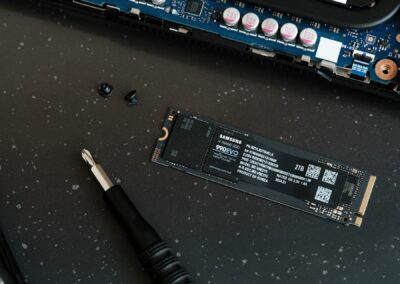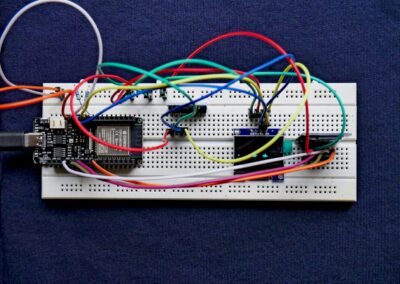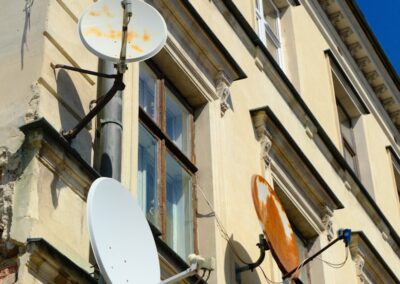Strengthening IoT Security with Advanced Connectivity Protocols
Ensuring Data Integrity and Privacy
The deployment of connectivity protocols for IoT security plays a pivotal role in safeguarding data integrity and privacy in the rapidly expanding Internet of Things (IoT) landscape. In technologically advanced cities like Riyadh and Dubai, where smart city initiatives and IoT deployments are integral to urban development, ensuring the security and privacy of data transmitted between IoT devices is paramount. Connectivity protocols form the backbone of secure IoT communications, ensuring that data exchanged between devices is protected from unauthorized access and tampering.
One of the primary concerns in IoT deployments is the potential for data breaches and cyberattacks. Connectivity protocols like Transport Layer Security (TLS) and Datagram Transport Layer Security (DTLS) provide robust encryption mechanisms that protect data in transit. These protocols ensure that data transmitted between IoT devices and cloud platforms is encrypted, making it difficult for malicious actors to intercept or manipulate the information. In healthcare IoT applications, for instance, the confidentiality of patient data is critical, and secure connectivity protocols help maintain this confidentiality by encrypting health records during transmission.
Furthermore, protocols such as Secure Sockets Layer (SSL) and Internet Protocol Security (IPsec) enhance the security of IoT communications by establishing secure channels between devices. These protocols use cryptographic techniques to authenticate devices and encrypt data, preventing unauthorized access and ensuring that only authorized entities can access the transmitted information. In the context of smart city applications, secure connectivity protocols are essential for protecting sensitive data related to traffic management, public safety, and utility services.
Implementing Authentication and Access Control
Beyond encryption, connectivity protocols also play a crucial role in implementing authentication and access control mechanisms in IoT systems. Authentication ensures that only legitimate devices and users can access the IoT network, preventing unauthorized entities from infiltrating the system. Protocols like OAuth and X.509 certificates provide robust authentication frameworks that verify the identity of devices and users before granting access to the network.
In the UAE and Saudi Arabia, where the adoption of IoT technology is accelerating, robust authentication mechanisms are essential for maintaining the security of IoT deployments. For example, in industrial IoT applications, authenticating devices that control critical infrastructure such as power grids and manufacturing systems is crucial for preventing cyberattacks that could disrupt operations. Connectivity protocols with built-in authentication capabilities ensure that only authorized devices can communicate with the network, enhancing the overall security of IoT systems.
Access control mechanisms, supported by connectivity protocols, further enhance IoT security by regulating the actions that authenticated devices and users can perform. Role-based access control (RBAC) and attribute-based access control (ABAC) are commonly used to define permissions and access rights based on the roles and attributes of users and devices. These mechanisms ensure that devices and users have access only to the data and functions necessary for their roles, minimizing the risk of unauthorized access and data breaches.
Challenges and Best Practices in IoT Connectivity Protocols
Addressing Scalability and Interoperability
While connectivity protocols are essential for IoT security, addressing the challenges of scalability and interoperability is crucial for their effective implementation. The IoT ecosystem comprises a diverse range of devices with varying communication standards and protocols. Ensuring seamless interoperability between these devices is a significant challenge, as different manufacturers may use different protocols.
In smart cities like Riyadh and Dubai, where IoT devices from multiple vendors are deployed, ensuring interoperability is critical for the smooth functioning of IoT systems. Standardizing connectivity protocols and adopting universally accepted standards can help overcome interoperability challenges. Protocols such as MQTT (Message Queuing Telemetry Transport) and CoAP (Constrained Application Protocol) are widely used for IoT communications and support interoperability across different devices and platforms.
Scalability is another critical consideration in IoT deployments. As the number of connected devices grows, the connectivity protocols must be able to handle increased data traffic without compromising performance. Protocols designed for scalability, such as AMQP (Advanced Message Queuing Protocol) and DDS (Data Distribution Service), can efficiently manage large volumes of data and support the growing needs of IoT networks. Implementing scalable connectivity protocols ensures that IoT systems can accommodate the increasing number of devices and data streams without degradation in performance.
Best Practices for Secure IoT Connectivity
Implementing best practices for secure IoT connectivity is essential for protecting data privacy and ensuring the integrity of IoT systems. One of the best practices is adopting a multi-layered security approach that combines encryption, authentication, and access control mechanisms. This approach provides comprehensive protection by addressing different aspects of IoT security, from securing data in transit to verifying the identity of devices and users.
Regular updates and patch management are also critical for maintaining the security of IoT connectivity protocols. Cyber threats are constantly evolving, and vulnerabilities in protocols can be exploited by attackers. Ensuring that connectivity protocols and associated software are regularly updated with the latest security patches helps mitigate these risks. In cities like Riyadh and Dubai, where IoT deployments are extensive, maintaining up-to-date security measures is essential for protecting critical infrastructure and services.
Additionally, conducting regular security assessments and audits can help identify potential vulnerabilities in IoT systems and connectivity protocols. Security assessments involve evaluating the effectiveness of security measures and identifying areas for improvement. Implementing recommendations from these assessments can enhance the overall security posture of IoT deployments and ensure that connectivity protocols provide robust protection against cyber threats.
In conclusion, connectivity protocols for IoT security play a crucial role in ensuring the privacy and integrity of data transmitted between IoT devices. By providing robust encryption, authentication, and access control mechanisms, these protocols protect IoT systems from unauthorized access and cyberattacks. Addressing challenges related to scalability and interoperability and adopting best practices for secure connectivity are essential for the effective implementation of IoT security measures. As Saudi Arabia and the UAE continue to embrace IoT technology, the role of connectivity protocols will be pivotal in achieving secure and resilient IoT deployments.
—
#ConnectivityProtocolsForIoTSecurity #IoTDataPrivacy #IoTSecurity #IoTDevices #SaudiArabia #UAE #Riyadh #Dubai #TechnologyIntegration











